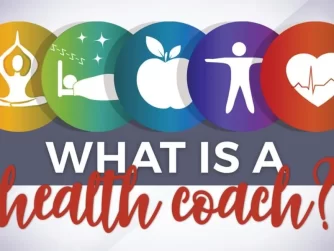Let’s be honest—getting your family to eat healthier can feel like trying to steer a cruise ship with a kayak paddle. Between picky eaters, busy schedules, and the constant pull of convenience foods, it’s no wonder so many parents feel stuck. But here’s the thing: it’s possible. Not only is it possible—it’s one of the most powerful gifts you can give your family.
As a personal trainer and nutritionist with decades of experience, I’ve worked with countless families facing the same roadblocks. The good news? You don’t need to be a gourmet chef or a strict food cop to turn things around. You just need a strategy that works in the real world.
Let’s break it down.
Why Should Families Care About Eating Healthier?
Before you start swapping out snacks and overhauling meals, it’s important to understand (and explain) why this even matters.
Food isn’t just fuel—it’s a building block for how we feel, how we function, and even how we behave. For kids, nutrition supports growth, brain development, energy, and focus. For adults, it’s about maintaining energy levels, reducing the risk of chronic illness, and supporting mental and emotional well-being.
Unhealthy eating habits in childhood often become lifelong patterns. According to the CDC, over 19% of children and adolescents in the U.S. are obese, a number that’s been steadily rising. Early exposure to nutrient-rich foods can help children develop tastes and habits that support long-term health.
In short: when we eat better, we feel better. And when families eat better together, everyone wins.
Start With Small, Realistic Changes
One of the biggest mistakes people make is trying to go from fast food five nights a week to a kale smoothie every morning. That rarely sticks—and it’s a quick way to create resistance. Instead, start small.
Here are a few ideas:
- Add instead of subtracting. Rather than saying “No more chips,” try, “Let’s add one new fruit to our snacks this week.”
- Upgrade favorites. Love tacos? Try ground turkey or black beans instead of beef. Pizza night? Use a whole grain crust and load up the veggies.
- Make one change at a time. Swap soda for flavored water this week. Next week, add a veggie to dinner. Build momentum.
Involve the Family—Especially the Kids
This is huge. Kids (and adults) are more likely to try something they had a hand in choosing or creating.
- Take them grocery shopping. Let them pick a new fruit or veggie each week. Say, “Let’s find something we’ve never tried before.”
- Let them help in the kitchen. Kids love mixing, pouring, and being part of the process. Even toddlers can tear lettuce or rinse berries.
- Talk about food in a positive way. Instead of saying, “This is healthy,” try “This helps you run faster” or “This gives your brain a boost.”
Food becomes fun when it’s interactive—not when it’s a lecture.
Make Healthy Food Taste Good
Let’s get something straight: healthy food doesn’t have to be bland or boring. You don’t have to eat dry chicken and steamed broccoli for the rest of your life. That’s a myth—and frankly, one of the reasons people give up.
Try these tips:
- Use seasoning. Herbs, spices, garlic, citrus, and healthy sauces can make all the difference.
- Try different cooking methods. Roasting veggies brings out their sweetness. Air frying gives crispiness with less oil. Grilling adds flavor.
- Make smoothies. They’re a sneaky way to get more fruits and veggies into your family’s diet—especially for picky kids.
You’re not forcing “health food.” You’re introducing delicious, whole food options that just happen to be good for you.
Be a Role Model, Not a Food Dictator
This one stings a little—but it’s true. If you want your family to eat better, you’ve got to walk the walk.
Kids are watching. If they see you enjoying veggies, drinking water, and eating balanced meals, they’re more likely to follow suit. But if they hear “Eat your salad” while you’re eating chips, it sends a mixed message.
Also—skip the guilt. Don’t demonize foods or call them “bad.” Instead, talk about “everyday foods” and “sometimes foods.” This helps kids build a healthy relationship with food that doesn’t involve shame or restriction.
Don’t Expect Perfection
Some nights, you’re going to order pizza. Some days, your kid is going to live on peanut butter sandwiches and air. That’s okay.
Consistency over time beats perfection in the moment.
Focus on what you’re doing most of the time. Are you offering fruits and veggies daily? Are you limiting processed snacks where you can? Are you setting the tone for balanced eating?
Then you’re doing great.
Real-World Example
I once worked with a family of five who were all struggling with low energy and weight gain. The parents were busy, the kids were picky, and they felt overwhelmed. We didn’t start with a diet plan. We started by identifying one meal a day they could improve.
They chose breakfast.
We swapped out sugary cereal for oatmeal with fruit and eggs. Then, we tackled lunches—prepping turkey wraps and yogurt instead of fast food. Dinner came later, and by that point, they were on board.
Within six months, the whole family had more energy, better focus, and fewer sick days. It didn’t happen overnight—but it happened.
And it can happen for you too.
Final Thoughts
Getting your family or kids to eat healthier is about progress, not perfection. It’s about creating an environment where healthy choices are the norm, not the exception. It takes patience, creativity, and a bit of strategy—but it’s absolutely doable.
Start small. Keep it simple. Get everyone involved. And most importantly—make it enjoyable.
Remember: you’re not just feeding their bodies. You’re teaching them habits that will serve them for life.







